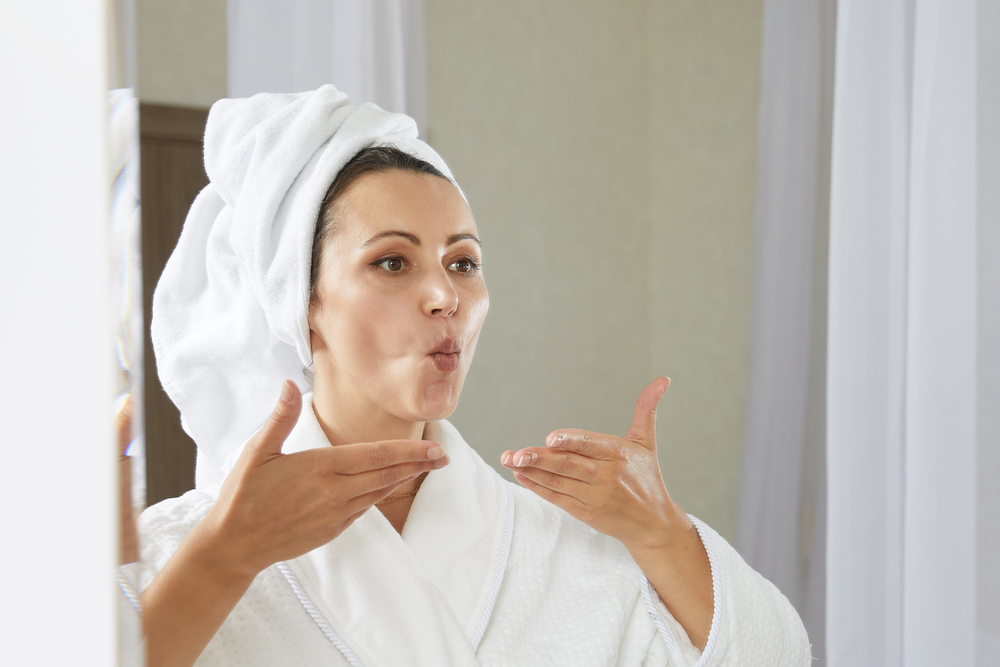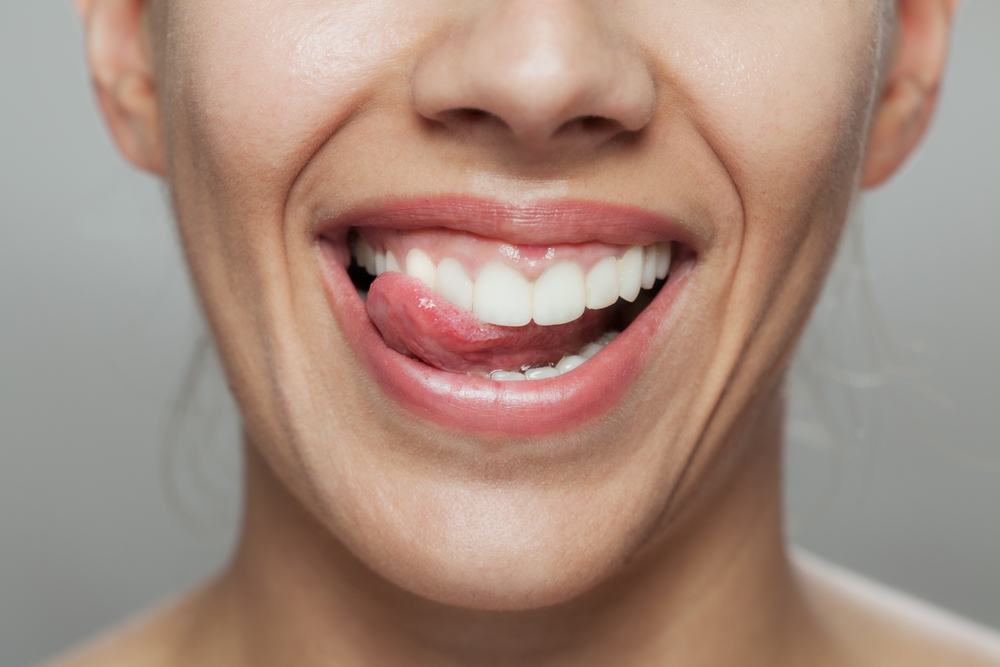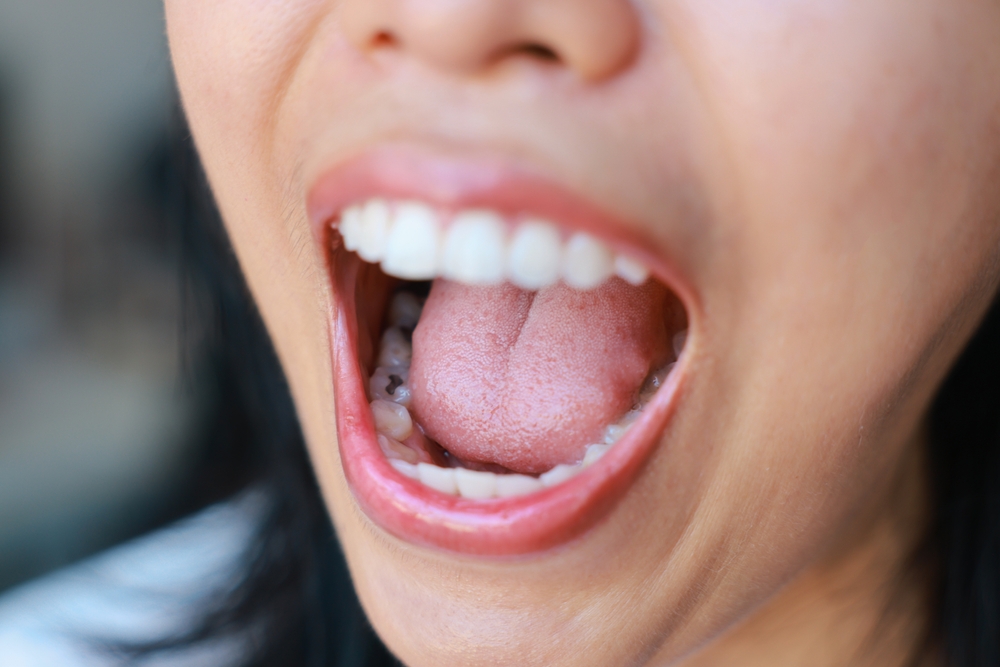Mouth and Throat Exercises for Sleep Apnea in Aventura, Pembroke Pines, and Fort Lauderdale, FL

Naturally Combat Your Sleep Apnea Symptoms
Sleep apnea is a common disorder characterized by interruptions in breathing during sleep. One of the contributing factors to sleep apnea is the relaxation of the muscles in the mouth and throat, which can lead to the obstruction of the airway. While there are various treatment options available, including CPAP machines and MAD devices, mouth and throat exercises can be a valuable approach to alleviating sleep apnea symptoms.
At The Dental Care Group, our experienced sleep dentists understand the challenges of living with sleep apnea. We’re here to help you explore all available treatment options, including mouth and throat exercises that can complement your comprehensive treatment plan. With over 50 years of serving South Florida families, we bring decades of expertise to your sleep apnea care.
Contact our local dentists near you to schedule your appointment at our Aventura dental office (305-935-2797), Pembroke Pines dental office (954-430-2300), or Fort Lauderdale dental office (954-963-3706).
Modern Technology for Better Outcomes
Your smile deserves the best, which is why The Dental Care Group invests in cutting-edge dental technology to provide you with the most effective, comfortable, and precise treatments available. Our digital imaging and diagnostic tools allow us to detect issues early and plan treatments with exceptional accuracy.
By combining state-of-the-art technology with our decades of clinical experience, we’re able to deliver superior results while minimizing discomfort and treatment time. Whether you’re receiving a routine cleaning or undergoing a complex procedure, you can trust that our modern approach ensures the highest standard of care. Our commitment to staying at the forefront of dental innovation means you benefit from the most advanced techniques and materials available in dentistry today, all delivered in a comfortable, patient-friendly environment with convenient Saturday hours at all three locations.
How Can Mouth and Throat Exercises Help You?
Mouth and throat exercises, also known as oropharyngeal exercises, are a set of exercises designed to strengthen the muscles involved in speaking, swallowing, and overall oral and throat health. These exercises can help prevent the collapse of the airway during sleep and reduce the severity of apneas. While they aren’t a standalone solution for severe cases, they can be a valuable part of your comprehensive treatment plan.
Just as you would exercise other muscles in your body to improve strength and function, these targeted exercises work to tone and strengthen the muscles in your mouth, throat, and soft palate. By improving the muscle tone in these critical areas, you can reduce the likelihood of airway collapse during sleep, leading to fewer breathing interruptions and better sleep quality.
Benefits of Mouth and Throat Exercises
Performing mouth and throat exercises may provide patients with the following benefits:
- Improved Muscle Tone: These exercises help strengthen muscles in the mouth, throat, and soft palate. Improved muscle tone can reduce the likelihood of airway collapse during sleep, leading to fewer apneas and better breathing patterns.
- Reduced Severity of Sleep Apnea: Regularly practicing these exercises can reduce the severity of sleep apnea symptoms. This means less interrupted sleep and improved overall sleep quality, helping you wake up feeling more refreshed and energized.
- Complementary Treatment: Mouth and throat exercises can complement other sleep apnea treatments, such as continuous positive airway pressure (CPAP) therapy or oral appliances. They can enhance the effectiveness of these treatments and may allow for lower CPAP pressure settings, making treatment more comfortable.
- Cost-Effective: Unlike other sleep apnea treatments that may require expensive equipment or devices, mouth and throat exercises are cost-effective and can be done at home without any special equipment. This makes them accessible to everyone.
- Better Sleep Hygiene: Incorporating these exercises into your daily routine encourages better sleep hygiene. As you become more aware of your sleep patterns and the factors that contribute to sleep apnea, you may also make positive lifestyle changes, such as adjusting your sleep position or avoiding alcohol before bedtime.
- Empowerment: Engaging in these exercises empowers individuals to take an active role in managing their sleep apnea. It provides a sense of control and self-management, which can be particularly valuable for those who struggle with compliance to other treatment methods.
- Reduced Dependency on Medication: For some individuals, mouth and throat exercises may reduce the need for medication to manage sleep apnea symptoms, offering a more natural approach to treatment.
- Enhanced Quality of Life: By reducing the disruptions caused by sleep apnea, these exercises can contribute to an improved quality of life. You may experience increased daytime alertness, better mood, improved concentration, and better overall health.
- Long-Term Sustainability: Unlike some treatment options that may have limitations or require ongoing costs, mouth and throat exercises are sustainable in the long term. Once you learn these exercises, you can continue practicing them as part of your daily routine without additional expenses.
Types of Mouth and Throat Exercises
Tongue Exercises
- Tongue Press: Push the tip of your tongue against the roof of your mouth and slide it backward. Repeat this motion several times. This exercise strengthens the tongue muscles and helps prevent the tongue from falling back and blocking the airway during sleep.
- Tongue Slide: Hold your tongue between your teeth and slide it out as far as it will go, then back in. Do this exercise several times. This movement helps improve tongue muscle control and positioning.
- Tongue Curl: Curl your tongue backward and touch it to the back of your mouth. Hold for a few seconds and release. Repeat this exercise to build strength in the back of the tongue, an area particularly important for maintaining airway patency during sleep.


Soft Palate Exercises
- Palatal Flutter: Create a fluttering sound by blowing air through your closed lips while keeping your mouth closed. This exercise engages and strengthens the soft palate muscles, helping to prevent collapse of the upper airway.
- Say “Ahh”: Open your mouth wide and say “Ahh” for as long as you can. This helps strengthen the muscles in your soft palate and throat. Try to lift your soft palate as high as possible while performing this exercise.
Jaw Exercises
- Jaw Thrust: Jut your lower jaw forward and hold for a few seconds, then relax. Repeat this exercise several times. This movement strengthens the jaw muscles and can help maintain proper jaw positioning during sleep.
- Chin Lift: Tilt your head back and lift your chin upward. Hold for a few seconds and release. Repeat this exercise to engage the muscles in the front of the neck and jaw.

Swallowing Exercises
- Effortful Swallowing: Swallow with extra effort, trying to squeeze all the muscles involved in swallowing. This exercise strengthens the throat muscles and improves coordination of the swallowing mechanism, which shares many muscles with breathing control.
- Supraglottic Swallow: Swallow while holding your breath, followed by a forced cough to clear your throat. This advanced exercise helps strengthen the protective mechanisms of the airway and improves muscle coordination.
Throat Relaxation Exercises
- Neck Stretches: Gently tilt your head from side to side and forward and backward to release tension in the neck and throat. Reducing tension in these areas can improve overall muscle function and reduce the likelihood of airway collapse.
- Yawning Exercises: Yawning can help relax the throat muscles while also engaging them through a full range of motion. Practice deliberate, exaggerated yawns to stretch and strengthen the throat muscles.
Breathing Exercises
Diaphragmatic Breathing: Practice deep breathing from your diaphragm to support better vocal control and overall oral health. Proper breathing technique can also help reduce sleep apnea symptoms by improving oxygen intake and respiratory muscle function. To practice, place one hand on your chest and one on your abdomen. Breathe deeply so that only the hand on your abdomen rises, keeping your chest relatively still.
How to Incorporate Exercises Into Your Daily Routine
Consistency is key to seeing results from mouth and throat exercises. Here are some tips for making these exercises a regular part of your routine:
- Set a Regular Schedule: Choose a specific time each day to perform your exercises, such as morning and evening. Consistency helps build the habit and ensures you don’t forget.
- Start Slowly: Begin with a few repetitions of each exercise and gradually increase as you build strength and endurance.
- Track Your Progress: Keep a journal or use a smartphone app to track your daily exercise routine and note any improvements in your sleep quality or daytime symptoms.
- Be Patient: Like any exercise program, it may take several weeks or even months to see significant improvements. Don’t get discouraged if results aren’t immediate.
- Combine with Other Healthy Habits: Use your exercise time as an opportunity to practice other healthy sleep habits, such as maintaining a regular sleep schedule and creating a relaxing bedtime routine.
Frequently Asked Questions
How often should I perform mouth and throat exercises?
Your goal should be to do mouth and throat exercises every day. Consistency is key for improvement, as with any other form of exercise. Ideally, you should perform these exercises at least once daily, though performing them twice daily (morning and evening) may provide even better results. Each exercise session typically takes only 10-15 minutes, making it easy to incorporate into your daily routine.
Can mouth and throat exercises cure sleep apnea?
Mouth and throat exercises can help alleviate the symptoms of sleep apnea, but they’re not a guaranteed cure, especially for severe cases. They’re most effective when used as part of a broader treatment plan that may include other interventions such as oral appliances, CPAP therapy, or lifestyle modifications. For mild to moderate sleep apnea, some patients may see significant improvement with exercises alone, but this varies from person to person.
How long does it take to see results from these exercises?
Most people begin to notice improvements in their sleep apnea symptoms after consistently performing mouth and throat exercises for three to four months. However, some individuals may see results sooner, while others may take longer. The key is to remain consistent with your exercise routine and combine it with other recommended treatments for optimal results.
Are there any risks associated with mouth and throat exercises?
Mouth and throat exercises are generally safe for most people. However, if you experience pain, excessive soreness, or worsening of symptoms, you should stop the exercises and consult with our dental team. We can evaluate your technique and make adjustments to ensure you’re performing the exercises correctly and safely.
Can children perform these exercises?
Yes, children can perform modified versions of these exercises under proper supervision. If your child has been diagnosed with sleep apnea, our pediatric specialists at Dental Care Group Kids can provide age-appropriate exercise recommendations and demonstrate proper technique.
2797 NE 207th Street, Suite 100 Aventura, FL 33180 | (305) 935-2797
12634 Pines Blvd. Pembroke Pines, FL 33027 | (954) 430-2300
3107 Stirling Rd #108 Fort Lauderdale, FL 33027 | (954) 963-3706
Schedule Your Appointment With The Dental Care Group Today!
Are you ready to get your sleep apnea under control? Or do you have questions about mouth and throat exercises? Contact our local South Florida dentists near you today to schedule an appointment. Call us at 305-935-2797 (Aventura), 954-430-2300 (Pembroke Pines), or 954-963-3706 (Fort Lauderdale) to get started! We’re here to help you achieve better sleep and better health through comprehensive, compassionate care.

